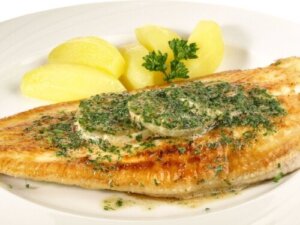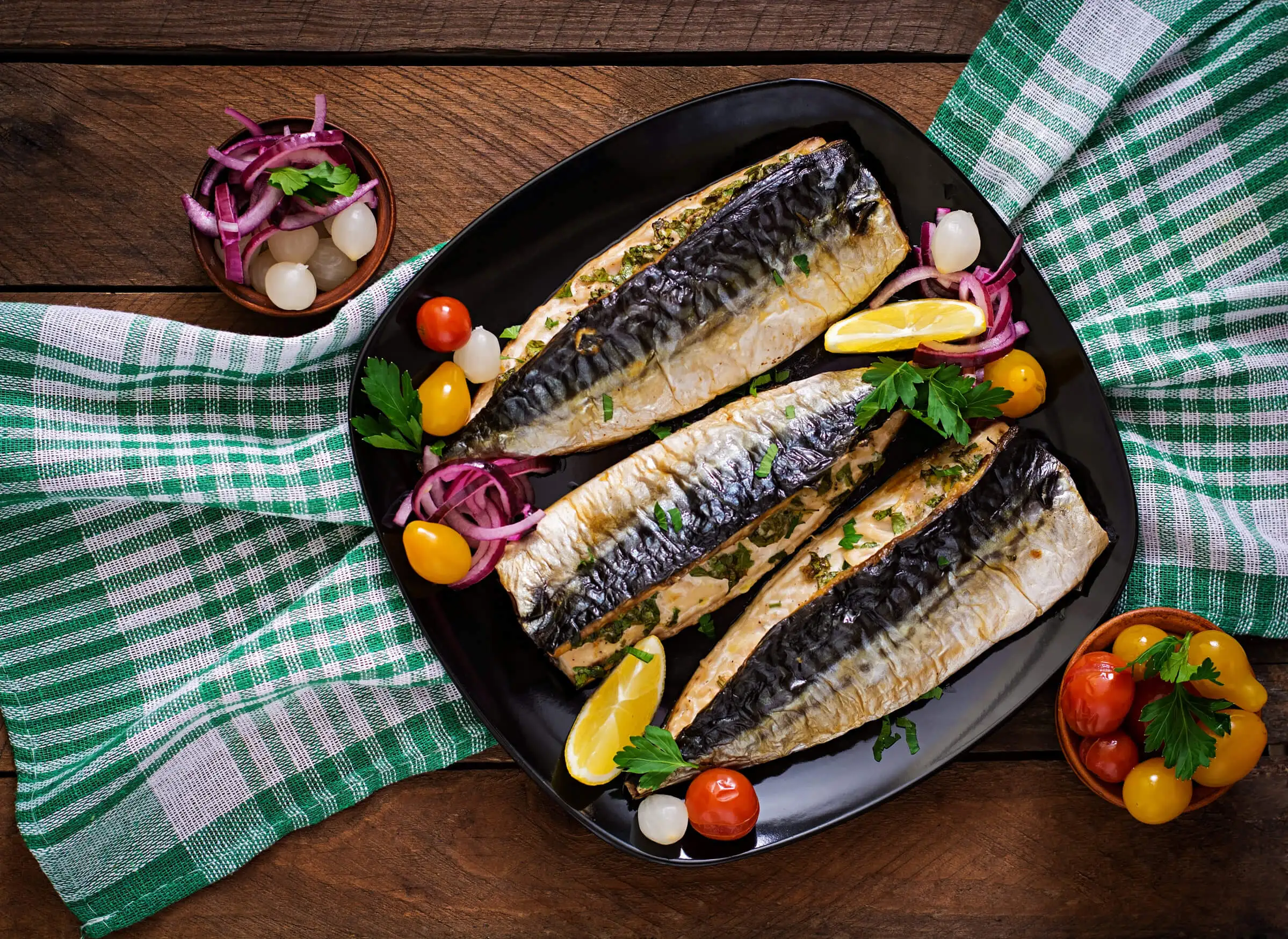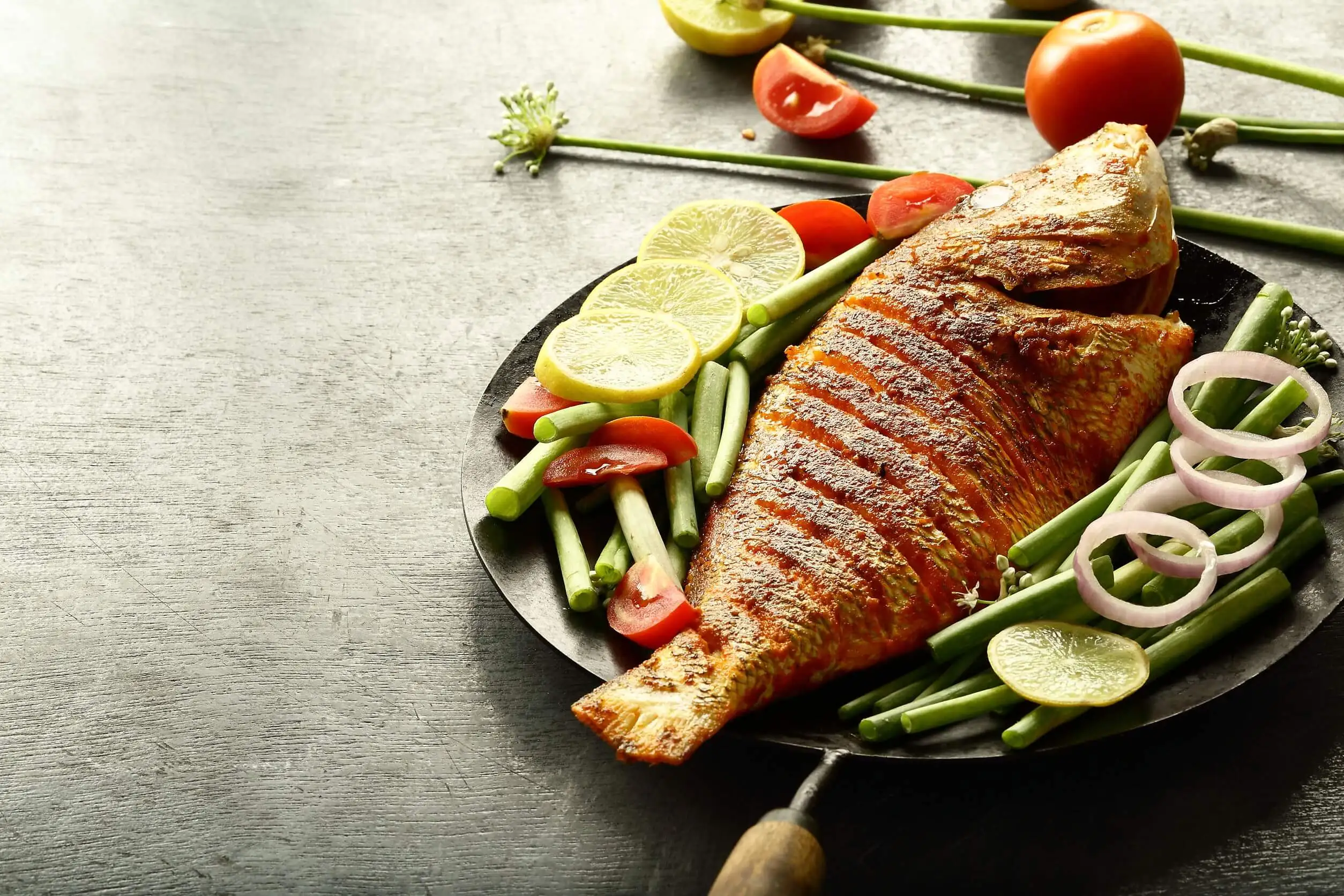Eating Sole: Nutrients, Benefits and Risks


Written and verified by the nutritionist Saúl Sánchez Arias
Sole is a good quality fish that can be included in the diet on a regular basis. In general terms, the presence of fish in the diet is recommended. These foods provide essential nutrients and don’t contain many calories, so they will not cause negative changes in body composition. Let’s have a look at the benefits of eating sole, along with some points you should be aware of.
Before we start, we must emphasize that, as far as possible, it’s better to eat wild fish than farmed fish. In the latter case, the fatty acid profile may be altered, containing a lower proportion of omega-3 fatty acids. These are considered essential for maintaining good health over the years.
The nutritional profile of sole
From a nutritional point of view, sole provides about 100 calories per serving. It has 20 grams (nearly 1 oz) of high biological value proteins and only 1.5 grams of fat. In addition, it’s a source of certain essential micronutrients, such as magnesium, phosphorus, selenium and vitamin B12.

Thanks to this nutrient profile, we could include the product in the diet if we want to help meet protein requirements. These have been shown to be determinant in preventing the development of chronic and complex pathologies, such as sarcopenia. This disease causes progressive destruction of lean mass and loss of strength, thus increasing the risk of death from several different causes.
Some minerals contained in sole, such as magnesium, could have a positive effect on sleep physiology. Maintaining the levels in adequate ranges will give you a more restorative sleep, with fewer interruptions, thus achieving an optimal recovery after the exertions of each day. This is evidenced by a study published in the journal Nutrients. Of course, good routines, such as going to bed early, are vital.
We must also refer to the presence of vitamin B12 in the food. This nutrient is present only in animal products and is vital in preventing anemia, which can condition the transport of oxygen through the blood. In the case of vegan diets, supplementation would be necessary, in order to prevent a deficit that would cause changes in the red blood cells.
Find out more: Fish Protein: Why It Shouldn’t Be Missing from Your Diet
Risks of sole consumption
Among the main risks derived from eating sole, there’s the possible existence of a food allergy. This autoimmune problem forces us to remove a food or group of foods from our diets, as they can seriously affect our health. If, when consuming this fish, you experience respiratory problems, itching, swelling, or rashes, it’s best to consult a specialist.
On the other hand, be careful with the presence of sole in the diet of pregnant women, as it can contain quite a lot of mercury. This heavy metal could accumulate in the adipose tissue and could cause damage to the fetus, if found in large quantities. This is evidenced by research published in the journal JAMA Network Open.

To minimize the risks, experts recommend that sole isn’t included in the diet more than a couple of times a week. It can be alternated with other fish, both white and blue, in order to improve the quality of the diet. Remember that experts recommended eating fish over meat to ensure better health.
It’s important to note that large fish are the most likely ones to have higher amounts of heavy metals or toxic compounds. Therefore, it’s best to opt for smaller fish during pregnancy or in the case of people who have problems related to the functioning of the immune system. In this way, risks will be greatly minimized.
You may also be interested in: The Benefits of Bluefish
Eating sole – beneficial for your health
As you have seen, eating sole is very beneficial from a nutritional point of view, although, in some cases, you have to be careful with its mercury content. In fact, most nutrition experts advise the inclusion of fish in the diet on a regular basis to improve cardiovascular health and to prevent the development of chronic and complex pathologies over the years.
However, it’s true that the price of these foods can sometimes prevent us from consuming them too frequently. A good alternative is always canned tuna, which contains omega 3 fatty acids and is cheaper.
Frozen fish is another good option and is cheaper than fresh fish in most cases. However, its organoleptic characteristics aren’t as good.
All cited sources were thoroughly reviewed by our team to ensure their quality, reliability, currency, and validity. The bibliography of this article was considered reliable and of academic or scientific accuracy.
- Prokopidis, K., Cervo, M. M., Gandham, A., & Scott, D. (2020). Impact of Protein Intake in Older Adults with Sarcopenia and Obesity: A Gut Microbiota Perspective. Nutrients, 12(8), 2285. https://doi.org/10.3390/nu12082285
- Cao, Y., Zhen, S., Taylor, A. W., Appleton, S., Atlantis, E., & Shi, Z. (2018). Magnesium Intake and Sleep Disorder Symptoms: Findings from the Jiangsu Nutrition Study of Chinese Adults at Five-Year Follow-Up. Nutrients, 10(10), 1354. https://doi.org/10.3390/nu10101354
- Stratakis, N., Conti, D. V., Borras, E., Sabido, E., Roumeliotaki, T., Papadopoulou, E., Agier, L., Basagana, X., Bustamante, M., Casas, M., Farzan, S. F., Fossati, S., Gonzalez, J. R., Grazuleviciene, R., Heude, B., Maitre, L., McEachan, R., Theologidis, I., Urquiza, J., Vafeiadi, M., … Chatzi, L. (2020). Association of Fish Consumption and Mercury Exposure During Pregnancy With Metabolic Health and Inflammatory Biomarkers in Children. JAMA network open, 3(3), e201007. https://doi.org/10.1001/jamanetworkopen.2020.1007
This text is provided for informational purposes only and does not replace consultation with a professional. If in doubt, consult your specialist.








